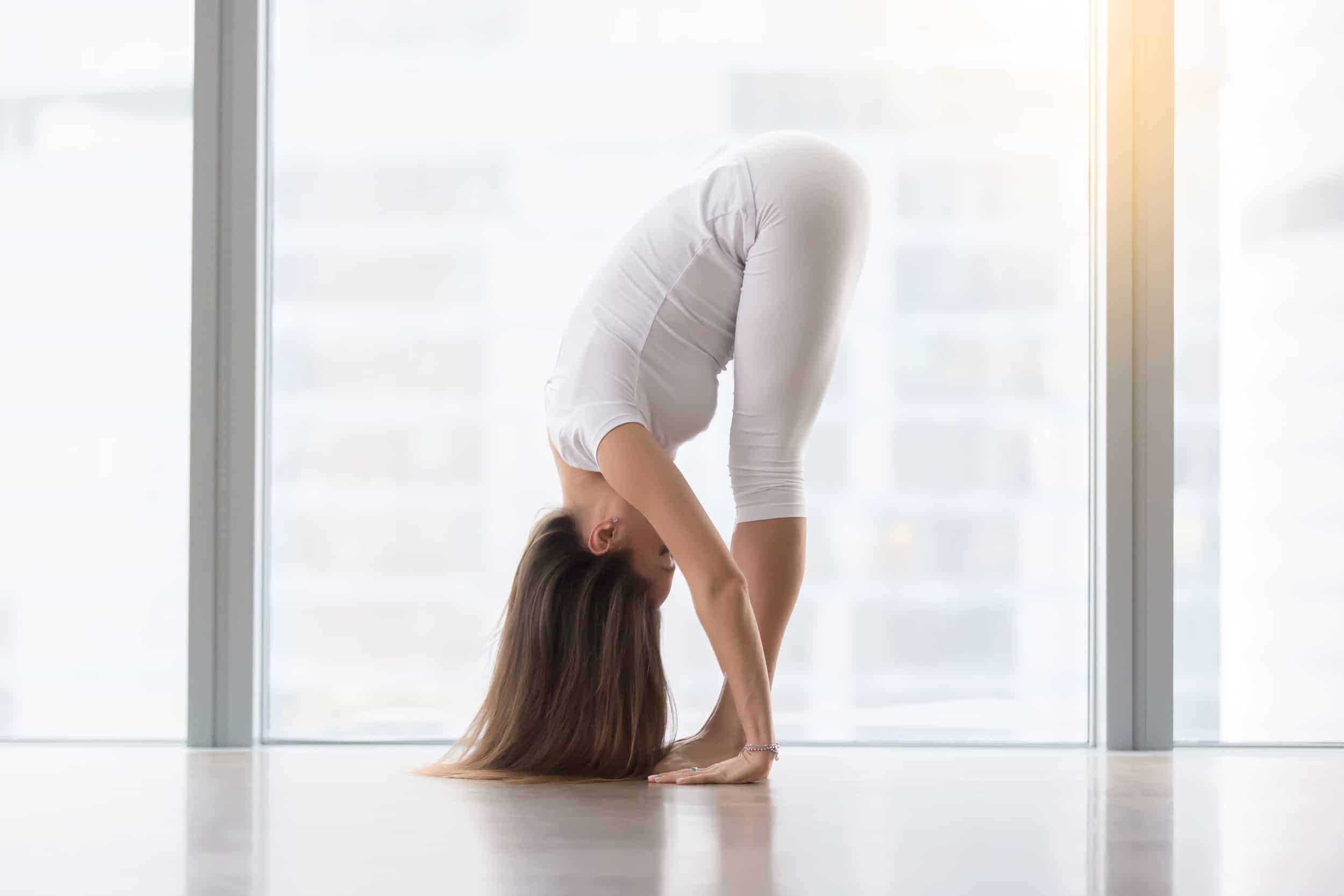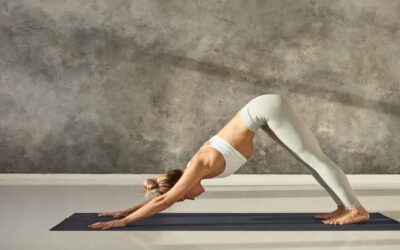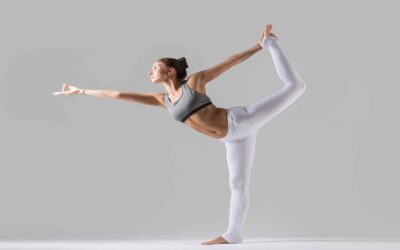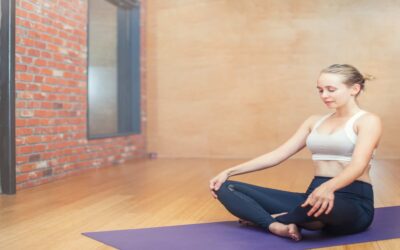Yes, you read it right! In this article, we will dive deep into Surya Namaskar, also known as sun salutations, the complete set of exercises for your mind and body.
Wondering how to do it? What are the potential health benefits? Well, to your surprise, anyone can do the Surya Namaskar. Children, young and old people, all at their own pace. Let’s check out more.
SURYA NAMASKAR – A COMPLETE ASANA
Surya Namaskar, often known as sun salutation, includes 12 steps of yoga poses; 12 mantras which are dedicated to the sun and pranayama as well.
While performing it, 10 yoga poses are chained to complete one Surya Namaskar! In this salutation, every rose has its own importance and merit for our physical health. The chain of poses includes the flexion and stretching of muscles alternatively.
While doing the 10 yoga poses of Surya Namaskar breathing is an integral part. At 1st pose inhale, 2nd pose exhale, 3rd pose inhale, 4th pose hold the breath, 5th pose exhale, 6th pose inhale, 7th and 8th pose hold the breath, at 9th pose exhale and at 10th pose inhale.
Inhale, hold the breath and exhale unified with pranayama.
When you do the Surya Namaskar in a traditional way which is a more spiritual blended exercise, you must concentrate on your breath while doing asanas. This will help you to increase concentration and focus on exercise.
While chanting the mantras of Surya Namaskar, you are surrendering yourself to the sun for his supreme energy. It is a form of showing gratitude towards the sun at the beginning of your day.
TYPES OF SURYA NAMASKAR
You can perform Surya Namaskar in 2 ways. Both ways have a similar sequence of asanas; one way contains 12 poses while the other has 10 steps. The only difference is the raised arm pose!
Both ways of practicing Surya Namaskar have similar impacts but still some people may use the raised arm pose and others may not. The following explains in detail on the whole 12 asanas which compose the sun salutation.
POSES OF SURYA NAMASKAR
Preparatory Pose
Do Surya namaskar in the early morning. If you want to do it in the evening, then keep your stomach empty for at least 2-3 hours minimum before you do sun salutations.
Stand on the mat, mostly the front part of your mat.
Stand in an upright position in such a way that your great toes, heels of both feet, knees touch each other.
Keep your hands in a namaste position, both palms, fingers together. Keep namaste posture in between your chest, close to the midline of the chest.
Pose 1 – Pranamasana / Prayer Pose
This pose is similar to the preparatory pose. Stand in an upright position and place your feet close together. Relax your chest, shoulder. Take a deep breath and feel the expansion of your chest. Keep your hands in a namaste position in between your chest. Slowly exhale breath. Prepare for 2nd pose.
Pose 2 – Hastauttanasana / Raised Arms Pose
While taking a deep breath, raise your hands upwards simultaneously, bend backward, push the hip region forward and stretch back. When performing the pose, make sure to keep your biceps close to your ears.
This asana gives a stretch to your whole posterior part of the body from the heel to the neck.
Pose 3 – Hastapadasana / Hand to Foot Pose
While exhaling, bend forward and try to touch the floor with your palm without bending your knee as well as try to touch your forehead to your knees. Be mindful to remain firm in this pose with normal breathing.
Do not bend your knees to attain perfect posture. It is totally ok if your hand touches the ankle or feet or forehead does not touch knees. It totally depends on your physical health and flexibility of your body. As you do regular practice of these asanas, one day you can achieve perfect posture.
In this posture, you can feel a stretch at your back and the back of your leg muscles. When you bend forward, the abdomen remains in a folding position, which will create some pressure on your abdomen. The pressure induces good digestion though.
Pose 4 – Ashwa Sanchalanasana / Equestrian Pose
After the 3rd pose, inhale the breath and try to attend this pose. In this pose, keep your right leg folded at the knee and right foot in between two palms. Simultaneously stretch your left leg backward.
To balance your body, touch palms to the ground. Move your upper body backward in such a way that your back forms an arch.
When you fold your right leg at the knee, make sure your calf region presses to the thigh. While the knee and toes of the left leg touch the ground. The heel of the left foot directed upwards.
In this position, you can feel a stretch at the abdomen muscle and back region. As both legs have different postures, it creates pressure in the waist area.
Pose 5 – Chaturanga Dandasana / Stick Pose
In a classical sun salutation, in this posture you should hold your breath in an inhale position. After the 4th pose, stretch your right leg backward and keep it close to your left leg. Do not bend your hand in elbow, keep hands straight while touching palms to ground. Keep your heels upwards by touching the toes to the ground.
In this position lift your waist and keep your back, thighs and legs in one aligned position away from ground. Balance your pose on your palms and toes. Keep your gaze straight.
In this asana, you will feel stress all over your body except facial muscles.
Pose 6 – Ashtanga Namaskar / Eight Limbed Pose
You exhale the breath and bring your body to the floor. But as the name suggests, eight limbs pose; only eight points of your body are grounded, and rest of your body parts remain away from the ground.
Try to touch your forehead, chest, both knees, toes, both palms to the ground; while desperately trying to keep your nose, abdomen, thighs in the air, away from the ground. Keep your hand folded in the elbow region.
In this position, you can feel pressure on your abdomen and back of neck region.
Pose 7 – Bhujangasana / Cobra Pose
In the 6th pose we exhale and make the body relaxed. Now while inhaling the breath attend to this position. This is a very easy yoga pose.
Lift your upper body from the waist region upwards, make an arch of your back by moving your head, neck and back backward. Keep your hand straight by touching the palms to the ground. Keep both legs straight backward, close together and grounded. Stretch your toes backward and keep the toes on the ground.
While inhaling, your back muscles feel stretched. This is a good stretching exercise for your spine and back area.
Pose 8 – Adho Mukha Savana / Downward Facing Dog
In the traditional way of Surya Namaskar, you should hold your breath while performing this pose. In this pose, lift your waist upward by touching your heel to the ground. Keep your hands and legs straight without bending them in elbows or knees. Try to touch your chin to the jugular notch. Keep your gaze towards the feet. Your body forms an inverted V in this posture.
When you perform pose 7 and 8 together, it produces good effects on your abdomen and back muscles. These poses help the internal organs of the abdomen greatly.
Pose 9 – Ashwa Sanchalanasana / Equestrian Pose
This posture is a repetition of pose 4. The only difference is in the breathing. Here you must hold your breath during this pose.
Bring your left foot forward and bend at the knee. Keep your right leg straight backwards; the knees and toes touch the ground while the heels are directed upward. Move your upper body backward and produce an arch in the back.
In this pose, for balance keep your palm grounded without bending your hand and elbows. Gently push your waist to the ground for more stretch. You will feel stretch on the back muscles and heel area.
Remember one thing, if you stretch your left leg backward in the 4th pose then in this pose, stretch your right leg backward. In this way, in one Surya Namaskar you can get similar stretch and muscle effects for both legs.
Pose 10 – Hastapadasana / Hand to Foot Pose
This pose is the same as the 3rd asana. Here you exhale the air and bring your right leg near the left one. Keep your legs and hands straight, try to touch your forehead to your knees and palms to the floor.
In any condition do not bend your knees, keep the leg straight so you can feel stretch at the back side of your legs.
As you exhale the air, you feel more relaxed. You can feel a stretch in the posterior part of your body.
Pose 11 – Hastauttanasana / Raised Arms Pose
While inhaling, raise your arms upwards and attend to a similar position like pose number 2. Raise your arms towards your head and move backwards, along with it bend your head and back backwards. This pose is a good stretching for the whole body.
Pose 12 – Tadasana / Standing Mountain Pose
This is nothing going back to preparatory pose for sun salutation. Bring your hands in a namaste position close to the midline of your chest. As you exhale, bring your arms down by your side and relax.
Relax your body and prepare for 2nd Surya Namaskar.
These are the 12 poses of Surya Namaskar, but you can do 10 poses too by skipping the 2nd and 11th pose. It is totally up to you which variation you feel is good for your body.
HEALTH BENEFITS OF SURYA NAMASKAR
Enhances Flexibility and Strength
Surya Namaskar is a combination of stretching and endurance exercise, it greatly improves the flexibility of the body. When practicing Surya Namaskar, it increases the strength of arms and lower limbs as well.
A study of intervention of Surya Namaskar in 119 obese female shows that Surya Namaskar with circuit training, treadmill training helps to reduce weight, increase body flexibility, increase lung capacity, and overall improve physical fitness and strength. If you focus only on Surya Namaskar, it also improves joint movements.
Improves Body Mobility and Posture
Sun salutation helps stretching and toning muscle of the abdomen, back, upper- lower extremities. The study of sun salutation on muscles shows that it increases mobility of almost all body joints by stretching anterior-posterior muscles and helps to improve posture.
Increases Lung Capacity
Performing Surya Namaskar increases lung capacity which is considerably beneficial for asthma. One of the studies among medical students about pranayama and Surya Namaskar effects on respiratory system concludes that Surya Namaskar and Pranayama substantially improves lung capacity.
Surya Namaskar is a perfect combination of physical and breathing exercise which keeps our respiratory system healthy and away from lung diseases.
Alleviates Indigestion
While doing Surya Namaskar, at pose 3, 5, 6 ; some pressure is created on the abdomen which directly affects the internal organs and glands of the abdomen. This helps to correct indigestion, constipation, and acidity problems.
While doing Surya Namaskar, at pose 3, 5, 6 ; some pressure is created on the abdomen which directly affects the internal organs and glands of the abdomen. This helps to correct indigestion, constipation, and acidity problems.
Relives Stress and Anxiety
Pranayama is integrated in Surya Namaskar. This helps to relieve stress and anxiety. Performing Surya Namaskar also gives a calm experience and improves mood disorders.
GENERAL TIPS
In general, when you do the traditional way of sun salutation, you should keep check of your own breathing. To complete the 12 Surya Namaskar, it takes around 5-7 minutes. Of course, you may keep it fast or slow according to your health condition and age.
In weight loss yoga, you can do fast salutations. You can perform salutations 1, 5, 12, 51, 108 or 1008 times depending on your health requirements.
Surya Namaskar is a perfect mixture of exercise and pranayama, so try to do it regularly as soon as you get out of bed.
You can do sun salutations in slow or fast ways. Both ways reap great health benefits. A comparative study of slow and fast Surya Namaskar on physiological functions among school aged children published in the International Journal of Yoga shows that the effects of Fast Surya Namaskar are like aerobic exercises; it increases muscular endurance and power whereas the effects of slow Surya Namaskar are like those of yoga training. Slow Surya Namaskar does bring positive physiological benefits like increasing your strength, stamina, and provides good heart health.
PRECAUTIONS
Well, anyone can do Surya Namaskar, but you should take some precautions while doing it.
Be aware to do every movement slow and carefully, especially if you are suffering from brain/ nervous ailments, you must do each movement slowly and swiftly.
People who have spinal column ailments or cervical, lumbar disc problems, should not bend forward or backward vigorously.
If you had abdomen ailments like surgery of hernia, or any other operations, you must do the exercise under the guidance of a yoga therapist.
People who have weak muscle strength should follow slow Surya Namaskar. Gradually you will develop muscle strength with practice.
Do consult a therapist or yoga teacher before practicing Surya Namaskar to maximize the potential benefits.
KEY TAKEAWAYS
The sun salutation is a complete exercise for your physical and mental health. Try to do it in the morning, which is the best time to do Surya Namaskar.
10 poses of Surya Namaskar are a series of extension flexion exercises, which improve muscle tone, flexibility, and body postures. As it has pranayama also, it helps to relieve stress and anxiety.
You can do it in two ways; fast and slow Surya Namaskar. Fast Surya Namaskar increases your muscle endurance, while slow Surya Namaskar increases your muscle strength and stamina.
To keep your body healthy and fit, try to make sun salutations routine in your life starting from today!
Article Sources
HealthxTips is committed to delivering content that adheres to highest standard for accuracy, sourcing and objective analysis.
HealthxTips uses only high-quality and trustworthy sources to support the facts in our articles.
1. Bhavanani, A. B., Udupa, K., Madanmohan, & Ravindra, P. (2011). A comparative study of slow and fast suryanamaskar on physiological function. International journal of yoga, 4(2), 71–76. https://doi.org/10.4103/0973-6131.85489
2. Jakhotia, K. A., Shimpi, A. P., Rairikar, S. A., Mhendale, P., Hatekar, R., Shyam, A., & Sancheti, P. K. (2015). Suryanamaskar: An equivalent approach towards management of physical fitness in obese females. International journal of yoga, 8(1), 27–36. https://doi.org/10.4103/0973-6131.146053
3. Karthik, P. S., Chandrasekhar, M., Ambareesha, K., & Nikhil, C. (2014). Effect of pranayama and suryanamaskar on pulmonary functions in medical students. Journal of clinical and diagnostic research : JCDR, 8(12), BC04–BC6. https://doi.org/10.7860/JCDR/2014/10281.5344
4. Mullerpatan, R. P., Agarwal, B. M., Shetty, T., Nehete, G. R., & Narasipura, O. S. (2019). Kinematics of Suryanamaskar Using Three-Dimensional Motion Capture. International journal of yoga, 12(2), 124–131. https://doi.org/10.4103/ijoy.IJOY_26_18








0 Comments